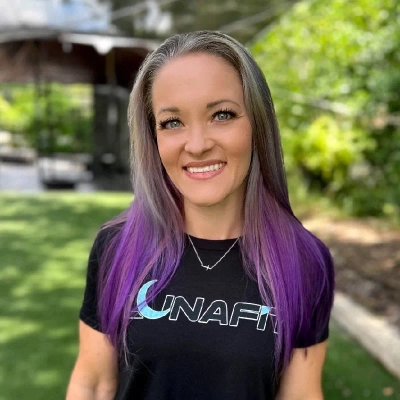11 Misconceptions About Wellness Modalities and How to Address Them
Wellness modalities often face misconceptions that can hinder people from experiencing their full benefits. This article debunks common myths surrounding various health and wellness practices, drawing on insights from experts in the field. By addressing these misconceptions, readers can make more informed decisions about their personal wellness journey and explore potentially life-changing modalities with confidence.
- Physical Therapy Prevents and Improves Daily Life
- Chiropractic Care Offers Proactive Health Benefits
- Psychiatry Partners with Patients for Holistic Treatment
- Therapy Empowers Self-Leadership and Personal Growth
- Whole Body Vibration Amplifies Smart Training
- Nutrition Education Fuels Sustainable Wellness Journey
- Recovery Requires Lifetime Commitment Beyond Rehab
- Creative Healing Taps Into Instinctual Human Tools
- LunaFit App Personalizes Wellness for Consistency
- Pilates Recalibrates Nervous System Through Movement
- Boundaries Foster Healthy Love in Addiction Support
Physical Therapy Prevents and Improves Daily Life
A lot of people think physical therapy is only for when you're injured or recovering from surgery, but that's simply not true. One of the biggest misconceptions I see is that you have to be in serious pain before getting help. The reality is, our wellness-focused approach is just as much about prevention and improving daily life as it is about recovery.
I think about a client named Rachel. She's a mother of three who had been dealing with constant back pain but kept brushing it off. She told herself it wasn't bad enough to need therapy. By the time she came to us, she could barely sleep or pick up her youngest without pain. Within a few sessions, with the right care plan and small lifestyle changes, she was feeling better than she had in years.
That experience stuck with me. And it's why I always try to show people that rehabilitation isn't just about bouncing back; it's about staying ahead. We design personalized programs that support everything from mobility and pain management to energy and mental clarity. Whether you're post-surgery or just tired of feeling stiff and worn out, you don't have to wait to start feeling better.

Chiropractic Care Offers Proactive Health Benefits
One of the most common misconceptions I encounter is the belief that you only need to see a chiropractor if you're in pain or have a specific injury. I have asked people in the past if they see a chiropractor. The response I sometimes get is, "Thank God, I haven't needed one!" But in reality, I believe that everyone could benefit from chiropractic care. Chiropractic is not just for "pain relief"; there are many benefits to getting such care!
I explain that while chiropractic is effective for resolving pain in some patients and recovering from injuries, it also offers wellness benefits that go far beyond pain relief. The chiropractic approach focuses on preventing injuries and pain, and on optimizing the overall function of your body, spine, and joints.
I tell potential clients that by seeing a chiropractor regularly, they can improve mobility, increase the range of motion, enhance nervous system function, and support the body's natural healing processes. It's about being proactive with your health, like getting regular check-ups at the dentist or servicing your car before it breaks down. Addressing subtle misalignments or restrictions early, before they turn into pain, helps prevent future issues, boosts athletic performance, improves posture, and contributes to overall health and energy. Just as you invest in your retirement, chiropractic care is an investment in your long-term health, not just reacting to discomfort.

Psychiatry Partners with Patients for Holistic Treatment
The most persistent misconception about psychiatry is that our only tool is a prescription pad and that treatment means losing yourself to medication. Potential clients often arrive with a hidden fear that my goal is to put them on a pill and send them away, without truly understanding their story.
The most persistent misconception about psychiatry is that our only tool is a prescription pad and that treatment means losing yourself to medication. Potential clients often arrive with a hidden fear that my goal is to put them on a pill and send them away, without truly understanding their story.
I address this on day one by explaining my role using an analogy. I tell them, "Think of me as a co-pilot for your brain. You are the pilot—you know the destination and the feel of the controls better than anyone. I'm the expert who understands the complex engineering, can read the whole instrument panel, and knows how to navigate rough weather." This immediately reframes our relationship as a partnership.
Together, we look at everything: sleep, nutrition, relationships, stress, and biology. Medication, if it's even needed, is simply a tool to stabilize the plane in turbulence; it's rarely the entire flight plan. The ultimate goal is to empower them with the insight and skills to fly confidently on their own.

Therapy Empowers Self-Leadership and Personal Growth
One common misconception I encounter is that therapy is just about "fixing what's wrong" or venting about problems. Especially with high-achieving or neurodivergent clients, there's often a quiet fear that seeking support means something is broken or that therapy will focus solely on deficits.
In reality, therapy, at least the way I practice it, isn't about labeling people as disordered or dysfunctional. It's about understanding your patterns, honoring your needs, and cultivating tools that actually work for your brain and your life. It's not about changing who you are. It's about becoming more of who you are, with less shame and more support.
When I talk with potential clients, I try to reframe therapy as an act of self-leadership, not self-critique. It's a space to explore your nervous system, untangle unhelpful stories, and build strategies that align with your values. Whether we're working on anxiety, identity, or executive functioning, the goal is never to "normalize" you; it's to liberate you.
That shift often brings relief. It opens the door to healing that feels collaborative, compassionate, and grounded in trust, not pressure to perform or conform.

Whole Body Vibration Amplifies Smart Training
One of the biggest myths about Whole Body Vibration (WBV) therapy is that it's a passive shortcut, as if standing on a vibrating plate could somehow replace a proper workout. Honestly, I understand why people might assume that. However, this couldn't be further from the truth, especially when WBV is applied with intention and correct biomechanics.
When used properly, vibration training triggers involuntary muscle contractions up to 50 times per second. We're talking about real neuromuscular engagement—especially in deep stabilizers around the spine, hips, and core. That kind of activation isn't just for show. It supports proprioception, bone density, circulation, and even lymphatic drainage. You don't get those benefits by just standing around.
At Hypervibe, we've made it our mission to educate people on the science behind amplitude, frequency, and G-force. These aren't buzzwords; they determine how effective (or ineffective) the vibration actually is. Most platforms barely scratch the surface with under 2G of force. Ours can safely deliver up to 17G, which is closer to the force generated during high-impact activity without the joint stress.
When clients say, "This sounds too easy," I show them how we combine WBV with functional movement protocols tailored to specific outcomes: fat loss, rehabilitation, strength, and even hormone balance. Once they feel muscles firing that they didn't know existed, the "lazy workout" narrative quickly disappears.
My rule? Never pitch it as magic. Frame it as a tool that amplifies smart training. That's how the perception shifts—from gimmick to game-changing plan.

Nutrition Education Fuels Sustainable Wellness Journey
People often assume that my approach to wellness, especially for weight loss, revolves around rigorous workouts and long hours at the gym. In reality, my focus is on nutrition--emphasizing delicious, nourishing foods rather than restrictive 'diets.' I prioritize educating my clients about making sustainable food choices that satisfy not only their bodies but also support their brain function, hormones, and mood. During consultations, I often surprise clients with the amount of food I recommend, tailored to their individual needs and goals. My method is all about empowering clients through education, helping them understand how to fuel their bodies effectively. In a world filled with quick-fix solutions and fad diets, I guide clients in peeling back these layers and returning to the basics of wholesome nutrition, emphasizing that achieving true health requires commitment and informed choices.

Recovery Requires Lifetime Commitment Beyond Rehab
One of the biggest misconceptions I hear is this: "Rehab is just 30 days and you're cured." That mindset is dangerous — and flat-out wrong. Recovery isn't a pit stop. It's a lifetime commitment. People think you go in broken and come out fixed. The truth? You come out equipped. The real work starts after the program ends.
At Ridgeline Recovery, we don't sell people false hope. We tell them the truth — recovery is brutal, beautiful, and never linear. The idea that you'll "snap out of it" after detox or one round of therapy is part of why so many relapse. We approach healing as a long game. That's why our model blends clinical treatment, aftercare planning, peer support, and spiritual restoration — because no single tool is enough.
When I talk to potential clients and families, I use real language, not clinical jargon. I tell them exactly what to expect — the emotional withdrawals, the anger, the breakdowns, the breakthroughs. I also tell them we'll be right there when it all happens. We don't just help you quit the drug — we help you rebuild the life you lost because of it.
The other part of the misconception? That people in recovery are weak. No — they're some of the strongest I've met. Anyone can numb out. It takes real guts to feel everything you were running from and still choose to stay clean.
So we break the myth, every day, by showing what real recovery looks like: raw, slow, sacred, and worth every damn step.
Creative Healing Taps Into Instinctual Human Tools
People tend to think creative healing is only for those who are naturally artistic or trained in some kind of technique, but that mindset is a barrier that keeps many from accessing what is actually one of the most instinctual tools we have as human beings. Creativity is a survival skill; it's how our ancestors processed pain, preserved memory, and connected with something greater than themselves long before there were therapists or wellness trends.
When I work with clients, I'm not guiding them toward mastery; I'm helping them feel safe enough to explore the parts of themselves they've silenced. The goal isn't to make something that looks good; it's to move energy and get closer to truth. The work gets messy, it brings up resistance and sometimes grief, but that's part of the medicine.
When you follow your creative intuition, you're choosing to heal in a way that honors your spirit, not just your symptoms, and that's what makes this work powerful. It's not the easy path, but it's the one that leads you home to yourself.
LunaFit App Personalizes Wellness for Consistency
One common misconception about the LunaFit app and our approach to wellness is that you have to overhaul your entire life to get results. People think they need to cut out everything they love, follow a rigid plan, or be "perfect" to make progress. That kind of all-or-nothing mindset is why so many people give up.
We meet people where they are. Our app personalizes workouts, nutrition, and habits to fit your lifestyle, not the other way around. We also offer support, flexibility, and even a bit of humor to keep people engaged. When potential clients hear that they don't have to be extreme, just consistent, they start to believe they can actually stick with it. And that belief is where real change begins.

Pilates Recalibrates Nervous System Through Movement
One of the biggest misconceptions about Pilates is that it's just stretching or boutique fitness on a machine. However, Pilates — when taught through a somatic and nervous-system lens — is far more than a workout.
I teach clients to activate their transverse abdominis (TA), the deep core muscle that wraps around the midsection and supports the gut. When you engage the TA properly — with breath and alignment — it stimulates the vagus nerve and the enteric nervous system, often called the "second brain." This system produces over 90% of serotonin and more than half of dopamine, both of which are critical to mood, memory, and emotional regulation.
So, what looks like simple movement is actually a form of neurological repatterning. Rolling on the spine, diaphragmatic breathing, and core engagement don't just build strength — they recalibrate the stress response and support hormone balance. For women in perimenopause or postmenopause, this approach can reduce hot flashes, improve digestion, stabilize mood, and restore energy.
When people come in thinking Pilates is about muscle tone or aesthetics, I invite them to feel what happens when they really move from the inside out. They feel lifted, regulated, and grounded.
I'm not anti-medication; I'm pro-awareness. Before jumping to prescriptions, why not start with movement? The body knows how to heal. We just have to teach it how to listen.
Pilates, taught with intention, is more than movement.
It's medicine.
Boundaries Foster Healthy Love in Addiction Support
One of the things I hear most often is the belief that setting boundaries with a loved one struggling with addiction is cold or unloving. People worry it means turning their back or giving up. I've sat with so many parents, partners, and siblings who are terrified that if they let go just a little, everything will fall apart. That fear runs deep, and I understand it because I've felt it myself.
It's incredibly hard to watch someone you love hurt themselves and not want to jump in and fix it. Saying "no" can feel cruel, even when it's the healthiest thing you can do. But what I've learned both personally and professionally is that boundaries aren't about punishment or withdrawal. They're about clarity. They're a way of saying, "I love you, and I care about you, but I can't lose myself trying to rescue you."
When someone first comes to work with me, I don't start by giving advice or laying out a plan. We begin with where they are. Usually, that means sitting with a lot of pain, grief, guilt, anger, and confusion. We talk about what they've tried, what's hurt, what they're afraid of losing. And from that place of honesty, we start to look at what it means to love someone without enabling them.
Boundary-setting isn't about pulling away. It's about staying connected in a healthier, more sustainable way. My job is to help people see that they can still care deeply and also care for themselves at the same time. That balance is often what gives their loved one the best chance at real change.
Addiction is painful and unpredictable. You can't control it. But you can find your footing in the middle of it, and that's where healing begins.




